It’s Jim Manton, If You Want To Be More ERO
ERO Sports is the operation run by Jim Manton. It's not spelled out, as in ee, are, oh. It's pronounced "aero". Is Jim a propellerhead? Well, kinda. He's F.I.S.T. Certified, A Retül Master Fitter, and ERO has presented Retul's "Position for Speed" course in the past. But, this is Jim's second life. In his first he was a homicide/narcotics detective!
I'm a big fan of letting your business talk to you. You never know where bike fit is going to take you. Jim is the 3rd fitter we've reviewed in this series. The first, Jon Blyer, said that his tri business has now shrunk to about 30 percent of his overall fits or, to put it another way, it didn't shrink, just, other cycling platforms – most notably gravel – grew up around Jon's tri bike fit business. For Jim Manton, 73 percent of his customers are triathletes. But that makes sense, since Jim's bailiwick is aero – he's carved out a special place just for those who are specifically, ardently aero-motivated. (Each fitter's business "spoke" to him with a different market message.)
However, he takes all comers. What might surprise you is that 52 percent of his clients are women. This is a specialty, and Jim and I – comparing notes – have discovered the same thing. What I teach in my Bike Fit Workshops is that women are, on average, "pleasers" for lack of a better term. They often think their job is to accommodate the fitter, and the fitter's job (according to me) is to say "no, my job is to accommodate you."
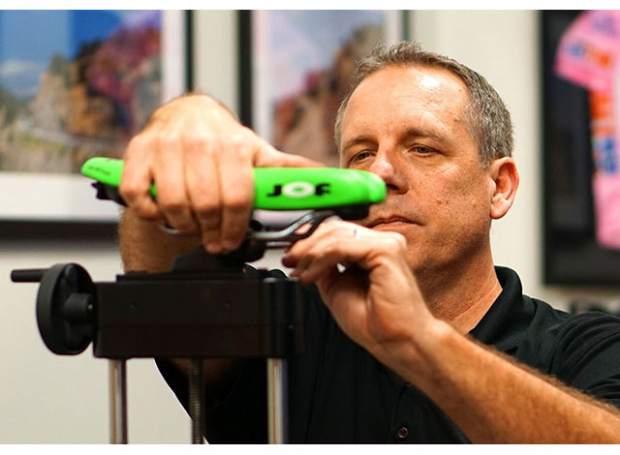
Here's how Jim puts it: "We find women tend not to complain about pain as much as men because they just assume it's supposed to hurt. The other thing we find women do is blame everything on themselves. Whether it's knee pain, back pain, or whatever, it somehow becomes their fault! Every fit for women begins with a lecture explaining there is no such thing as normal pain, and if they do feel pain, it's not their fault. We keep it light and make talking about pain, especially saddle pain, as comfortable as possible."
"I think our success fitting women has snowballed via word of mouth which explains why so many women come to us."
Tooling: Jim is currently using Retül for motion capture and a Retul Müve fit bike, though they'll be "upgrading" (Jim's word) to MotionLogic's system in the next few weeks. This is interesting, because Retül has been considered the state of the art for 3D mocap. But when you see MotionLogic in operation, you may think otherwise. This is Lloyd Thomas's brand (Lloyd's a citizen of the world, based in Germany, not German, and is Patrick Lange's fitter among many others – I would imagine we'll be profiling Lloyd in this series). MotionLogic and VelogicFit (David Bowden's system, David who is a designer of Profile Design's aerobars and is Cyclenutnz on our Reader Forum) are really compelling 3D mocap systems that give Retül a run for its money.
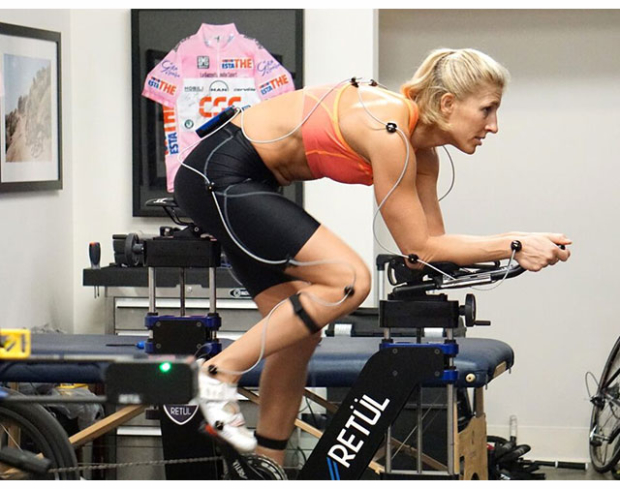
May I digress? Do you see what's happening here? There's a new cabal in bike fitting. A new braintrust. A lot of very technical people who've made tools, systems, and the things you ride aboard, who think alike, not because of groupthink but because individual investigations have brought them together because of converging trajectories.
The fitters I'm profiling here, and Lloyd Thomas, and David Bowden, this is the present and the future of big time bike fitting.
Back to tooling! There's a SwitchIt on Jim's Retül Müve fit bike. Does this device ring a bell? I wrote about it. Actually, I've written about it 9 times on the front page over the years. We did a thing called the Slowtwitch Saddle Tour back in 2013. Note how so much of Jim's business is women? And it's word of mouth? I promise you, that SwitchIt is part of the reason. Tools matter.
ERO has virtually every arm pad and extension shape out there to replicate what is on a client's bike and, of course, dozens of saddles for clients to try. Jim says he "captures" the client's current position on his or her bike and then move over to the fit bike for the fit. I didn't ask, but, by "capture" I suspect he means he uses Retül's Zin tool. If you read our review of Trent Nix (Trishop Plano) this is what Trent does. Great fitters think alike.
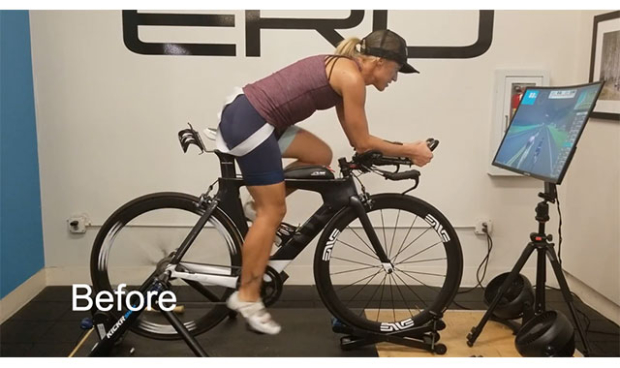
Jim has a tool no one else does: the Alphamantis System for aero testing exclusive to ERO here in the U.S. Tools like this, and the Aeropod, Notio, Velosense, STAC, this is what's coming. Jim was just here before anyone else.
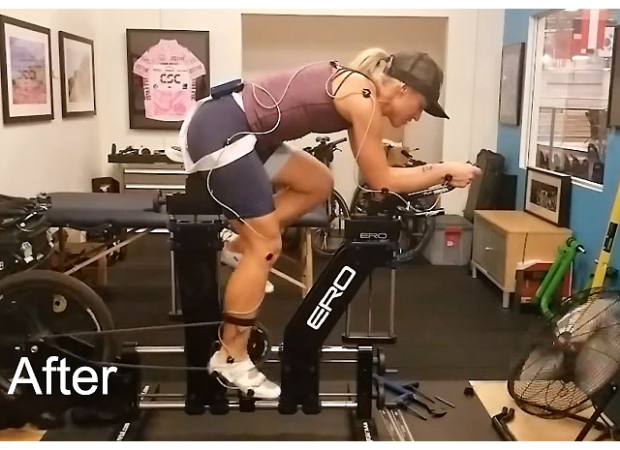
Drivers: This is a highly technical question I ask every fitter. What, precisely, causes you, as a fitter, to change a user's fit coordinate? Jim says there are two primary drivers for him:
"What makes a good fit is known, and forms the base of all fits. Normative data provides us with acknowledged, relatively firm, ranges the body generally performs well within when it comes to joint angles. Our ranges are an aggregate of F.I.S.T. and Retül, but with a few twists thrown in based on our years of data. We don't conduct "Retül Fits" if there is such a thing. I told Ian Murray once, we're F.I.S.T. on steroids. F.I.S.T. at the core, but we go deeper than most. For instance, it's beginning to be acknowledged at the very pointy end of the fit industry that the main driver of crank length is not hip angle, but the knee flexion angle at the top of the pedal stroke. Hip angle is in play, of course, but the main driver is that knee angle. We've found it's pretty well defined, and we have the angle which the knee shouldn't surpass."
Okay. Let's unpack this. Remember, Trent Nix in his profile said, "orthodoxy" when asked about what drives his decisions. What Jim says above is "normative data." They're talking about the same thing. What they're both saying is that our best wager is to trust that good riders ride the way they do for good reasons, just as good golfers, pole vaulters, and baseball players share best practices in common. You might say, "Of course!" However, for a generation the state of bike fit believed precisely the opposite. The drivers that determined fit coordinates were the idiosyncrasies that drove subjects away from orthodox positions, and this made perfect sense if these fit systems were designed by companies whose primary businesses were making custom bikes. It has taken us a generation to unlearn this, however many fitters haven't unlearned it yet. This is why I preach to you all: Find out what drives a fitter's behavior and decisions before you give him your body and your money. Jim's other primary driver:
"The client drives the position; it's self-selected based on the normative ranges. These days, though I still ask the client their inclination as I take them through position adjustments, I know before they answer what their body prefers. Still, I like them to realize that what they prefer is almost always correct; I want them leaving trusting their body. The client self-selects until I believe it's not in their best interest, but that's where we go deeper, and I'm more than happy to explain that further if you'd like."
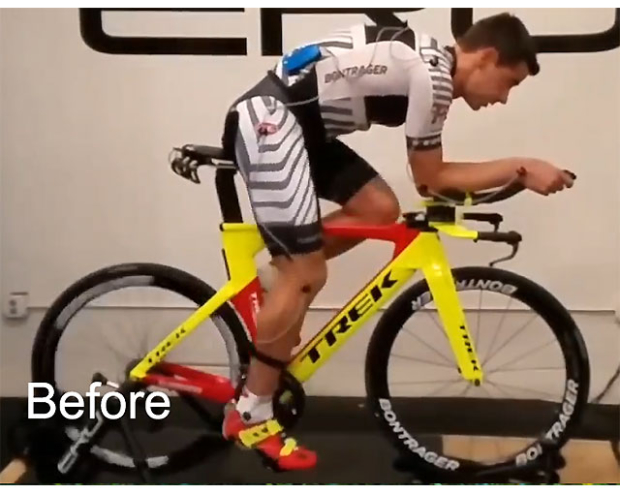
Jim told me, unbidden, that, "David Bowden (remember him, from a few paragraphs up?) independently came up with [knee flexion angle at the top of the pedal stroke]. In fact, our fits are so similar, I'm convinced David is my much smarter long lost twin."

Then there are Jim's B-level drivers, which include aerodynamics. You might find that eyebrow raising. But Jim feels as I do: Fit to comfort and power, you'll be surprised how much the aerodynamics take care of themselves. Here's how Jim puts it: "There's nothing more fun than dropping the front end of the fit bike 1cm at a time and watching the amazement of the athlete as they get more and more comfortable. That is my favorite part of the fit process; I love that. Are they getting more aero? Yep, most definitely, but more importantly, they're getting comfortable.
And finally, cost. " I'm really cheap with my client's money, and try to keep the cost of achieving their desired position to a minimum." This is pretty much what Trent Nix said.
Cost: $295
Deliverables: The client leaves with all their fit coordinates including handle bar x/y, pad x/y and everything else included in Retül's report, including saddle make/model, crank length, aero bar set up, etc. Jim will provide detailed explanations of all coordinates throughout the fit process. His clients know where they started, where they ended up, and why the changes were made.
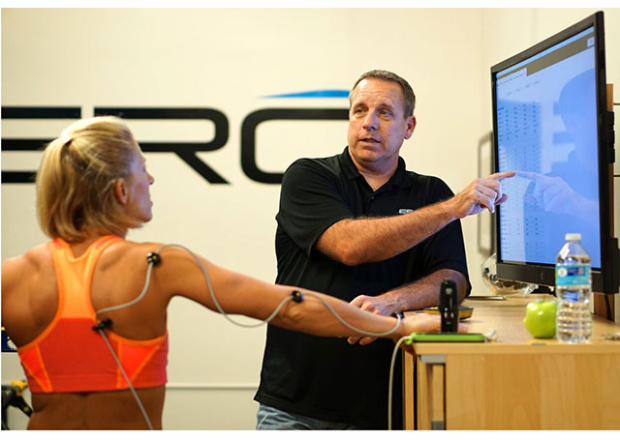
A before and after video is included (See all these before and after photos? Some are stills from these videos.), as well as a summary report of the fit and all recommendations for equipment change.
If the fit was Pre-Purchase, Jim provides a list of all bikes that are appropriate for the fit coordinates, with recommendations based on the closest technical matches and the client's budget. How each bike should be set up is also included, though Jim prefers the client bring the bike to him for final assembly and fit. If this is not possible, a detailed description of the setup is provided in detail. Once the new bike is purchased, it's fit to the client as part of the service at no additional charge.
Bike recommendations will be provided at no additional charge at any time. For instance, if a client received a fit on their bike 3 years ago, but are looking for a new bike. They simply email us and we'll send recommendations.
All of the above is uploaded to a client portal on our web site so clients can print or download their reports at any time. The client needn't worry about losing their numbers.
FuBAR Question: This is the part of our overview the good fitters look forward to, the Fitters BAR Exam question (FuBAR), and the other fitters dread. My question for Jim, and in honor of how much work he does with women: "Let’s take one of these triathlete women. She ends the fit session with a pad (center) stack and reach of 575mm x 455mm. Then let’s say she chooses a bike you recommend, and it’s built. Can you tell me, with precision, what that bike is, and it’s config? Any price range you want, any bike you want."
This is the question I asked Jim. Below is his answer.
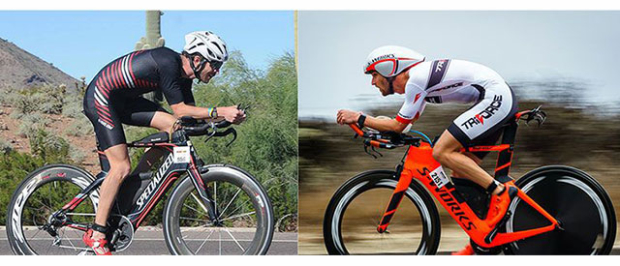
"Well, these days that's sort of easy because so many manufacturers have fit calculators. First, I'm going to assume 455 is to the center of the pad. Let's look at a couple of bikes, actually.
1. Trek Speed Concept, size Small, Low-Far Stem, 35mm Mono-Spacer minus the 5mm spacer under the pad bracket. You're actually little in-between on this bike, so in reality you might set this up with a 25mm Mono-Spacer with the 5mm bracket spacer.
2. Felt IAx Series, size 48cm, Alloy Aero Bar, 15mm of spacers under the bracket, and Arm Pad behind the bracket but in the forward position.
3. Now let's look at a Scott Plasma. Great bike, technically she can fit to a size Small, TT Stem, Pads slammed in the rearward position. But, you're maxing this bike out. You have no wiggle room here if you ever want to go lower and, because the TT stem is needed to achieve the fit coordinates, she won't be able to take advantage of the bike's integrated storage. So, I would put this on the list because, yes, it fits, but I would make darn sure she understood the limitations this bike presents.
"Of course, not everyone has a fit calculator, so sometimes it's just about doing the math. Not a problem because I have the fit coordinates."
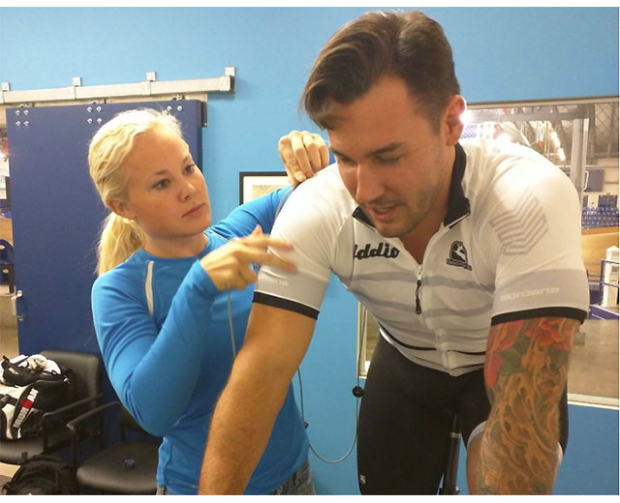
Jim's answer above is precisely right. Are there other bikes that would work? Yes. Some perhaps better. But the list above is solid and if I asked Jim for 3 more solutions I'd get 3 more. Your fitter should be able to answer these kinds of questions without breaking a sweat.
Couple of notes. There's an East Coast ERO, run my Missy Erickson (pictured above). Jim placed a query on our Reader Forum, asking about a proposed bike optimizing tour: ERO Dynamic Powered By TriRig. It's an interesting idea, and our Forum is enthusiastic about it. I bring this up to highlight this fitter's capacity, but also as an instructive exercise. Imagine this taking place, using Alphamantis tech, around velodromes. Can you imagine the rider harnessed up to a Retül mocap system? I can't. (Not easily.) And that's fine. Just, it goes to the question of drivers. And the answer is: What are your metics? If the output is drag, rather than body angles, then this is the metric that primarily drives position changes made by the fitter. This is neither good nor bad. It goes to the purpose of the exercise; the result you're looking for, as a consumer.
My guess is that a lot of the people who'd consume this service – Dynamic ERO – already have pretty good positions, they have the 90 percent dialed, they're looking to get the other 10 percent. In this case aero becomes the primary driver rather than the secondary (because comfort and power have largely been solved for many or most of these customers.)
Read more about ERO and Jim Manton.


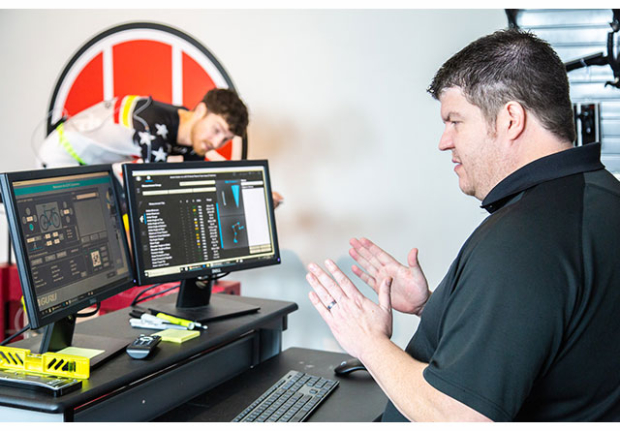
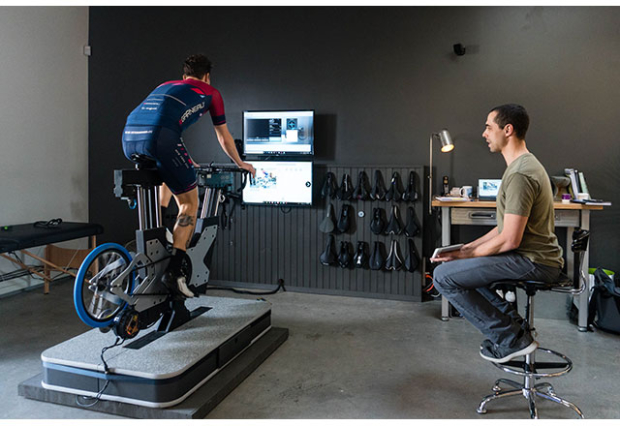

Start the discussion at slowtwitch.northend.network